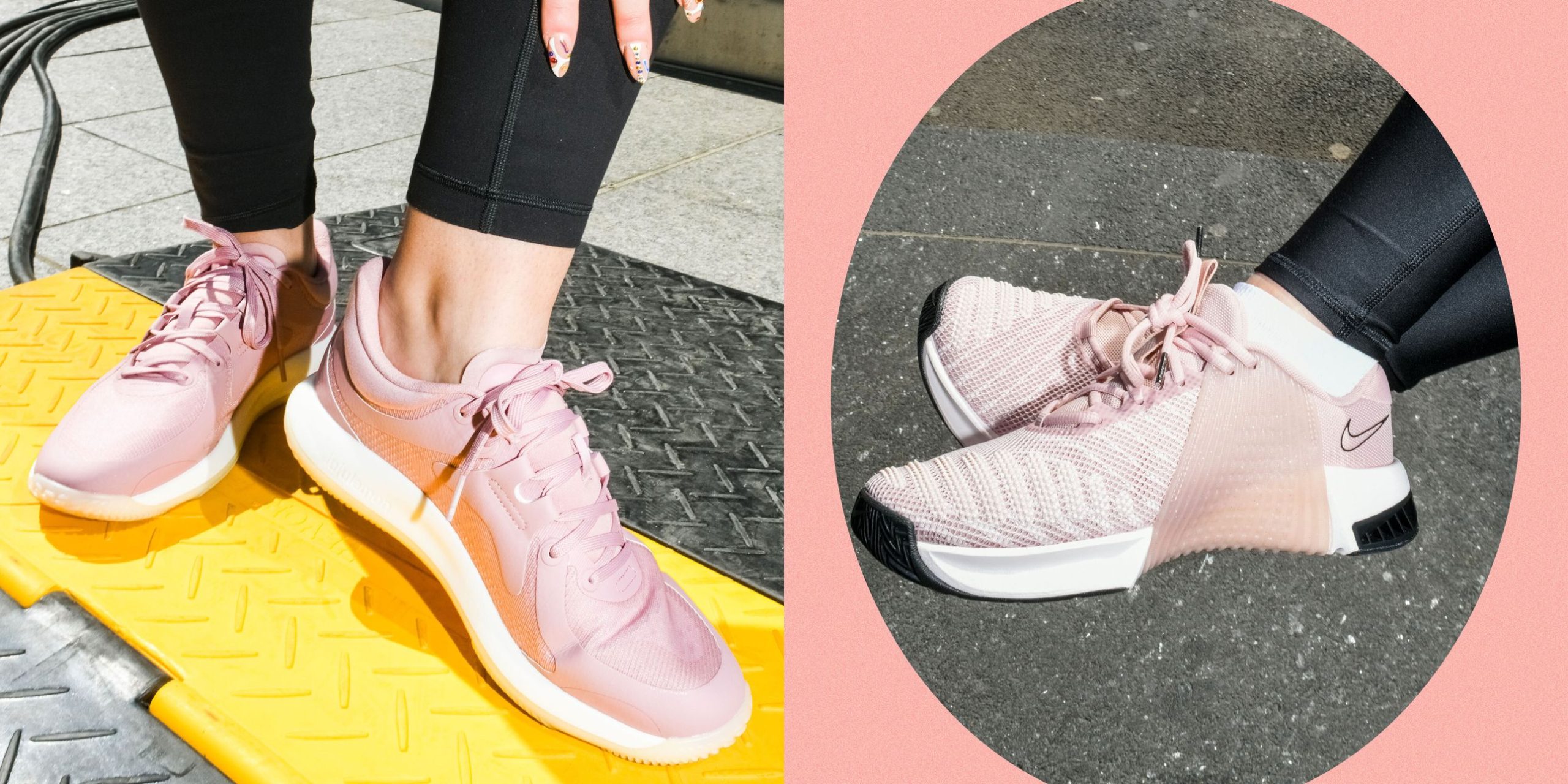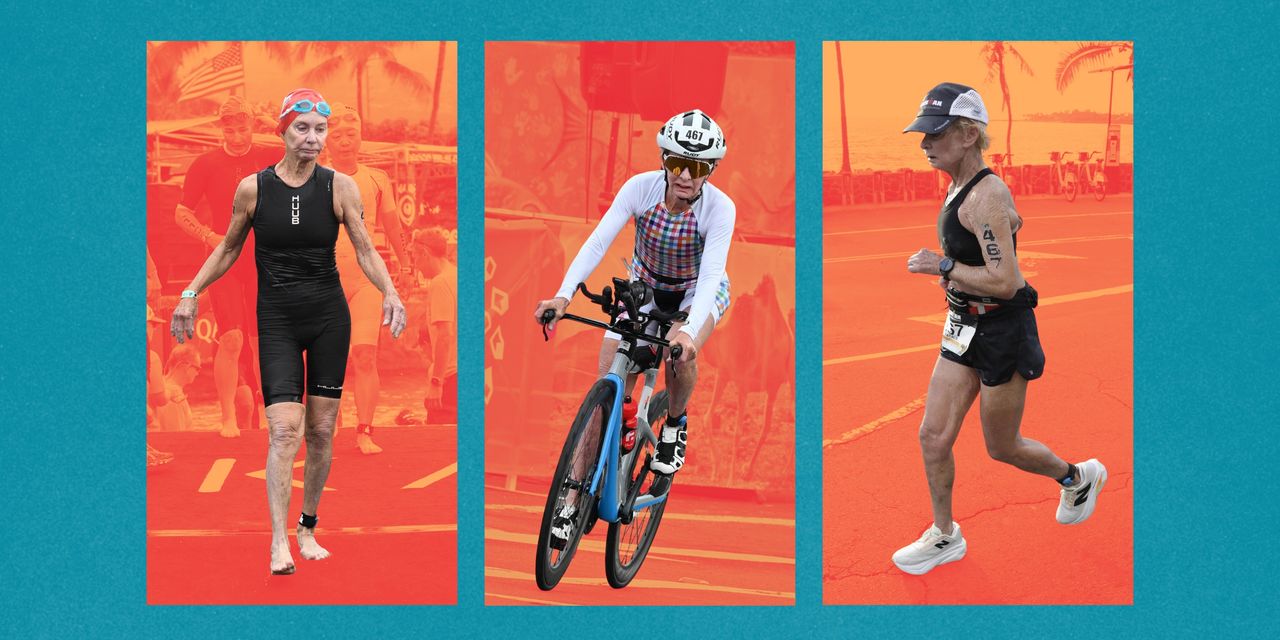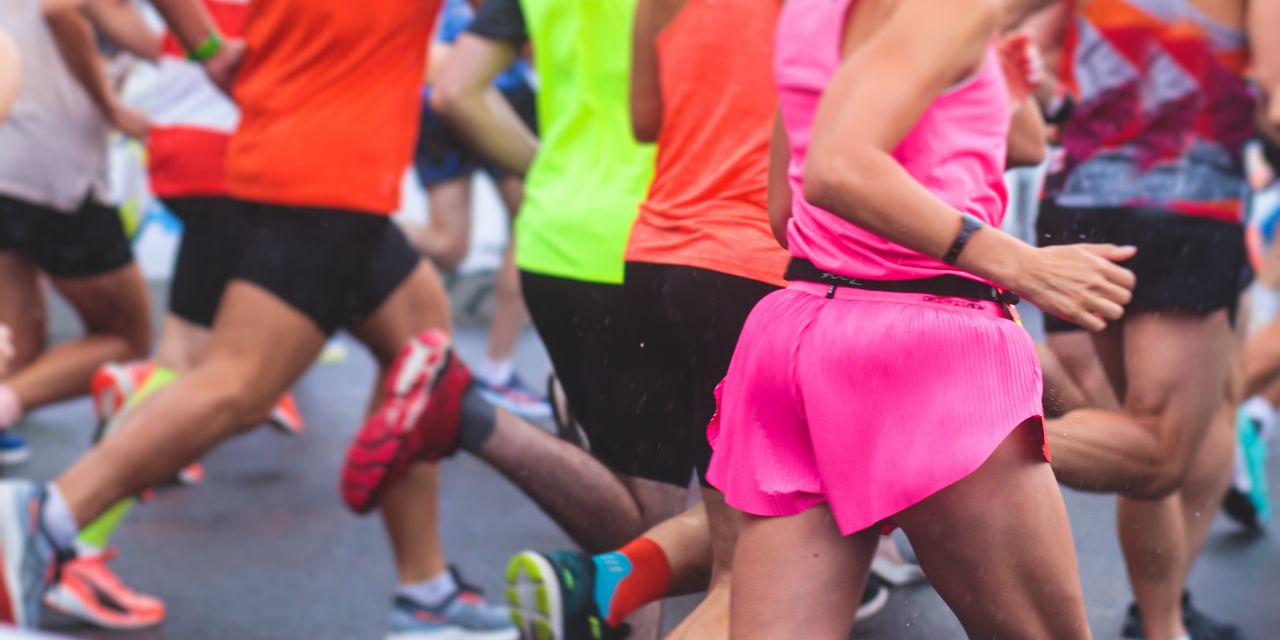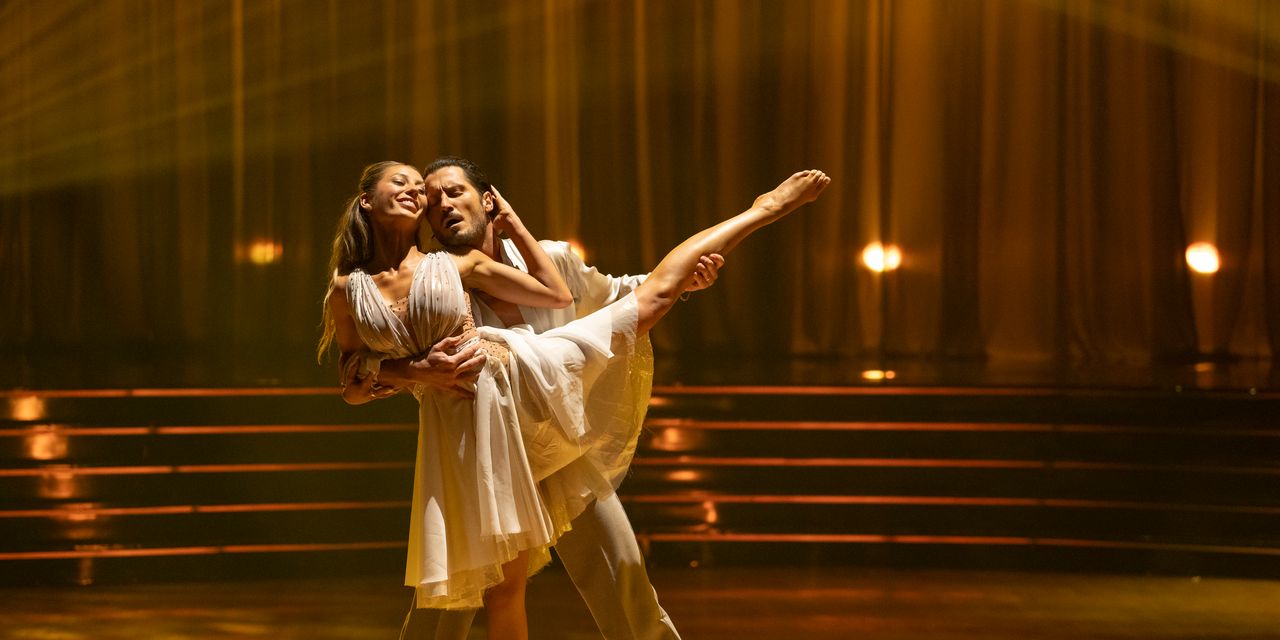Yes, You Need Special Shoes for Weightlifting—Shop Our Favorites

Good footwear stays comfortable while you’re strength training, but the best weightlifting shoes can actually improve your form and keep you safe during your workouts. Just like running shoes, these pairs have specialized features (like a stiff, sturdy base and a snug fit) to encourage proper body alignment during your exercises. Ultimately, they can help you feel more grounded and confident while you train.
We spoke to personal trainers and foot health experts to get more info on how to pick the pair that’s right for you. Then, we tested some of the most popular weightlifting shoes to see if they really live up to the hype. Our favorites are firm, stable, and supportive, so you can focus on your reps—not your steps.
Our top picks
- Best Overall, Flat: Puma Fuse 3.0, $120
- Most Comfortable: Lululemon Strongfeel, $128
- Best Cross Trainer: Nike Metcon 9, $155
- Best for Wide Feet: Ryka Influence Training Sneaker,
$90$65 - Best Overall, Lifted: Nobull Outwork, $149
- Best Budget Pick: Converse Chuck Taylor All Star High Top Sneakers, $65
- Best Splurge: Nike Romaleos 4, $200
- Best for Beginners: On Cloudpulse, $120
- Best for Stability: Reebok Nano X5, $140
- Best for Flat Feet: Nike Free Metcon 9, $125
Best Overall, Flat: Puma Fuse 3.0
Puma
Fuse 3.0 Training Shoes
Trakoshis wearing the Puma Fuse 3.0
Dolly Faibyshev
Meet the latest SELF Sneaker Award winner for weightlifting. Puma’s Fuse 3.0 has a firm, stable base that helped our testers feel grounded and a flexible sole that moved with them during lunges. “I don’t have to think about them when I’m lifting or worry about readjusting between sets,” one tester said. “The flat bottom helps me stay stable and really push through the ground for my bigger lifts, especially deadlifts, where you definitely don’t want any wobble.”
They added that, despite the shoe’s firmness, their feet didn’t ache or feel tired by the end of their session. Once they pulled the diagonal laces taught, our tester also noticed that their foot stayed put inside the shoe, with zero heel slippage. As far as we’re concerned, when it comes to a flat weightlifting shoe, the Fuse 3.0 is as good as it gets (and it’s pretty cute too).
Sizes: US 5.5 to 11 | Heel-to-toe drop: 4 millimeters | Weight: N/A | Materials: Synthetic fabric, synthetic materials, thermoplastic polyurethane (TPU), rubber
Trakoshis testing the Puma Fuse 3.0:
Most Comfortable: Lululemon Strongfeel Training Shoe
Lululemon
Strongfeel Training Shoe
Shopping market editor Angela Trakoshis wearing the Lululemon Strongfeel Training Shoe
Dolly Faibyshev
Back in 2022, Christa Sgobba, CPT, an ACE-certified personal trainer and SELF’s director of fitness and food, tested and loved Lululemon’s Strongfeel shoes. In her review, she noted that the sneakers’ secure base made it easy to focus on her exercises, rather than how her feet felt. “Although I was mainly interested in testing these for lower-body days—where stability is even more important—I found myself reaching for these for any strength-training workout, simply because they made me feel better,” she wrote.
Sizes: US 5 to 12 | Heel-to-toe drop: 6 millimeters | Weight: 10.20 ounces | Materials: Mesh, foam, rubber
Shopping market editor Angela Trakoshis testing the Lululemon Strongfeel Training Shoe:
Best Cross Trainer: Nike Metcon 9
Nike
Metcon 9 Training Shoes
Senior commerce editor Sarah Felbin wearing the Nike Metcon 9
Dolly Faibyshev
The Metcon 9, Nike’s flat cross training shoe, features a strong, solid plate in the heel and a combination of firm and soft foam in the insole, so it’s sturdy with just the right amount of give. The tongue has a strap that holds the shoe’s laces in place and out of the way, a nice safety measure that could also save you from tripping in the weight room. All of these features make it a great choice for anyone who likes to pair their lifting sessions with aerobics, Crossfit, and any other faster, higher-agility cross training.
Sizes: US 5 to 12 | Heel-to-toe drop: N/A | Weight: N/A | Materials: Synthetic fabric, mesh, foam, TPU, rubber
Senior commerce editor Sarah Felbin testing the Nike Metcon 9:
Best for Wide Feet: Ryka Influence Training Sneaker
Ryka
Women’s Influence Cross Trainer
Gunderman testing the Ryka Influence Training Sneaker
Dolly Faibyshev
If most sneaks leave your toes feeling cramped, try Ryka’s Influence Training Sneaker. Unlike many other shoes on our list, they come in two widths and have a pretty roomy toe box. They’re also lightweight, at just over 7 ounces, so they won’t feel clunky in the weight room. Plus, breathable mesh panels in the upper boost airflow (no sweaty feet here).
Sizes: US 5 to 12 | Heel-to-toe drop: 6 millimeters | Weight: 7.2 ounces | Materials: Faux leather, mesh, EVA foam, rubber
Associate social media manager Katie Gunderman testing the Ryka Influence Training Sneaker:
Best Overall, Lifted: Nobull Outwork
Nobull comes highly recommended by Future app trainers Tiffany Thompson, an NASM-certified personal trainer, and Lauren Powell, PhD, CSCS. This bestseller from the brand is built for stability, with a minimal heel lift and a rubber outsole for extra grip. Its durable upper is abrasion-resistant and protective, so your feet will stay safe (and your shoes will last a while).
Sizes: US 5 to 11 | Heel-to-toe drop: 4 millimeters | Weight: 11 ounces | Materials: Synthetic fabric, ethylene-vinyl acetate (EVA) foam, rubber
Best Budget Pick: Converse All Star High Top Sneakers
Converse
All Star High Top Sneakers
In addition to its retro appeal (and good price point), the Chuck Taylor High Top has endured as a go-to gym shoe for its minimal cushioning and flat sole, Jared Gremillion, DPM, a podiatric surgeon at Holston Medical Group in Bristol, Tennessee, tells SELF. The low heel will help you feel more connected to the floor and maintain your balance. One thing to note: These shoes are on the narrow side, according to reviewers, but Converse offers wide sizing in select colors.
Sizes: US 5 to 13 | Heel-to-toe drop: 0 millimeters | Weight: N/A | Materials: Canvas, foam, rubber
Best Splurge: Nike Romaleos 4
The durable Nike Romaleo 4 is a splurge-worthy shoe if performance is top-of-mind for you. It has attained fan-favorite status among dedicated lifters for its wide range of motion and super-stable base. However, like other stiff, lifted options in our roundup, it isn’t the best shoe for CrossFit or cardio workouts.
Sizes: US 5 to 16.5 | Heel-to-toe drop: 20 millimeters | Weight: N/A | Materials: N/A
Best for Beginners: On Cloudpulse
If you want to add lifting to an already varied workout routine (say, one with cardio, plyometrics, and HIIT classes sprinkled in), On’s Cloudpulse is a great all-around gym shoe. Sgobba tested a pair and found that they felt great during warm-ups and more dynamic exercises: “I’d consider the Cloudpulses comfy, but not really to the point where I’d call it out. Rather, they were more like, put them on, lace them up, and forget that they’re on—which isn’t really a bad feature in a shoe!”
They aren’t as flat or stiff as other sneakers on our list, so they’re not the best option if you’re lifting heavy weights and want a super stable base, she says. But we like them for beginners who want to take their weightlifting journey nice and slow.
Sizes: US 5 to 11 | Heel-to-toe drop: 8 millimeters | Weight: 10 ounces | Materials: Recycled polyester, EVA foam, rubber
Best for Stability: Reebok Nano X5
Reebok’s best-selling Nano line is a longstanding favorite among dedicated gym-goers—its previous iteration won a Sneaker Award, and the recently released X5 is one of Sgobba’s current favorites. “They’re pretty great, especially for keeping you stable and in touch with the ground when you’re doing heavier compound lower body moves like deadlifts or split squats,” she says, adding that Reebok improves the Nano’s fit with every update.
“The shoe fits closer to your foot and is a little more streamlined,” Sgobba says. “In early versions, I often had to stop during a workout to retighten so my foot didn’t slide around, but these remain locked in from the get-go.”
Best for Flat Feet: Nike Free Metcon 6
Here’s another cross training-friendly Nike, which has a more flexible sole compared to the standard Metcon. Our tester appreciated how supported she felt through her midfoot—a sensation that can be hard to find in flat-bottomed lifting shoes.
As SELF has previously reported, that added structure can be helpful for people with low arches or totally flat feet. Shoes that hold and cradle your arches can help take some stress off your feet and lower leg muscles, so you don’t have to work as hard to maintain your balance.
“Wearing these shoes was like having the best of both worlds—I could feel my toes and heels on the ground, but my arches were lifted and supported,” our tester says. “They helped me feel more stable while doing deadlifts and goblet squats. It’s so helpful to be able to feel the ground well, similar to how it feels when I’m in socks, but without any sliding because of the grippy soles.”
Sizes: US 5 to 15| Heel-to-toe drop: N/A | Weight: N/A | Materials: Mesh, EVA foam, rubber
What should you look for in a weightlifting shoe?
Stability is key: Shoes made from sturdy materials with a stiff, wide sole will help you feel grounded while strength training, Dr. Gremillion says. If you plan to wear your shoes for cross training, they can have some padding—but save the max cushion sneakers for your runs.
When it comes to heel drop—or the difference in height between the heel and midfoot—it’s really up to you, Dr. Gremillion says. A zero-drop (a.k.a. flat) shoe enables you to push through your heels, helping you move weights up with more force, which is useful for exercises like deadlifts. On the other hand, an elevated heel increases your ankle’s range of motion, which can help you maintain your posture and get deeper into certain lifts, like back squats, Thompson explains.
Dr. Gremillion adds that shoes with raised heels may be useful if you’re working on improving your form, as they can help keep your spine straight and your abs engaged. Most pairs are between 18 and 20 millimeters tall under the heel, although you can find lower and higher options. Trying on a few different pairs can help you find your preferred height.
If you like a snug fit, consider a pair that has both traditional laces and an adjustable midsole strap—that combination should keep your feet from shifting mid-rep. Have sweaty feet? Look for a shoe with mesh panels and perforations, which allow for better breathability without sacrificing structure. Ultimately, the shoe you choose should make you feel comfortable and confident, and not distract you from your lifts, Dr. Gremillion says.
Who tested these shoes?
We tap experts and everyday gym-goers to test new weightlifting and gym shoes each year as part of SELF’s Sneaker Awards—that’s why previous years’ winners pepper our list. And SELF editors are always trying out new models and writing shoe reviews year-round, as part of our jobs. We’ve worn many of our top picks extensively, evaluating them for fit, feel, and functionality.
Frequently asked questions
What are the benefits of weightlifting-specific shoes?
Shoes made specifically for strength training is a worthy purchase for any regular gym-goer. That’s because they’re designed to be stable and supportive, so you can firmly plant your feet and generate the power you need to move heavy weights, Dr. Gremillion says.
Which shoes should you not lift in?
Weightlifting shoes are different from many running shoes, which often have a curved rocker sole. Those bottoms are designed for forward movement, but they can throw off your balance while lifting. In other words, it’s not a great idea to wear running sneakers when you’ll be focusing on strength training—instead, opt for one of the flatter pairs we feature here.
Are shoes necessary for weightlifting?
While it’s not uncommon to see someone doing squats and deadlifts in their bare feet, Dr. Gremillion advises against it. “It’s such an individual thing,” he says. “[But going shoeless] is not recommended by any means. No surgeon would ever recommend that.”
This is because, while barefoot lifting may help you feel more connected to the ground, it also puts you at greater risk of injury: If you lift heavy, the excess load on the muscles and bones in your feet could increase your risk for stress fractures—or you could drop a weight on your unprotected toes (ouch).
Your feet need some amount of structure in order to be a good foundation when you’re lifting, Janine Hatch, PT, DPT, a physical therapist with the Hartford Healthcare Rehabilitation Network in Connecticut, tells SELF. Without it, you can develop plantar fasciitis (which is characterized by stabbing heel pain) from the extra load that weightlifting puts on your feet, she explains.
She adds that your whole lower half is at risk of straining when you skip proper footwear: “Wearing a supportive sneaker helps maintain the integrity of the midfoot posture and supporting ligaments in your feet, knees, and hips,” Dr. Hatch says.
Our experts
- Jared Gremillion, DPM, a podiatric surgeon at Holston Medical Group in Bristol, Tennessee
- Janine Hatch, PT, DPT, a physical therapist with the Hartford Healthcare Rehabilitation Network in Connecticut
- Lauren Powell, PhD, CSCS, a Future app trainer
- Christa Sgobba, CPT, an ACE-certified personal trainer and SELF’s director of fitness and food
- Tiffany Thompson, an NASM-certified personal trainer and Future app trainer
Related:
- The Most Supportive Shoes for Plantar Fasciitis, According to Experts
- 22 Pairs of Comfy Walking Shoes for Every Occasion
- We’ve Tested Home Gym Equipment for Years—This Is the Best of the Best
Get more of SELF’s great product recommendations delivered right to your inbox (for free!).




